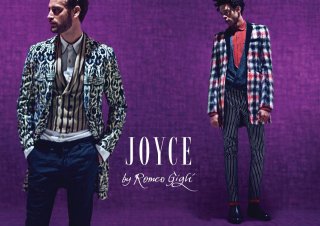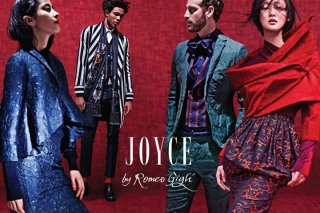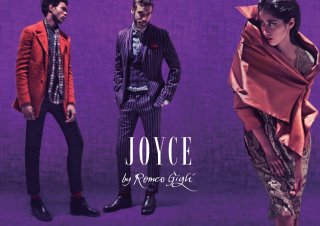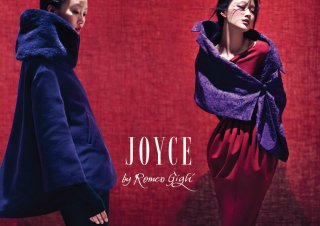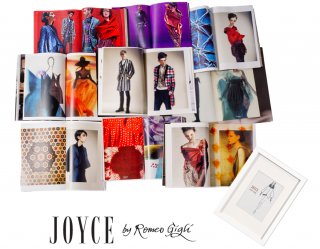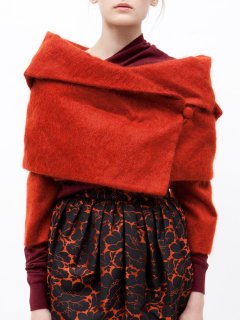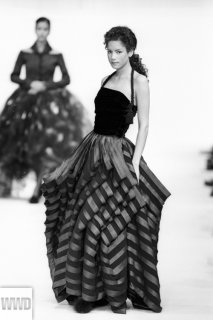You are using an out of date browser. It may not display this or other websites correctly.
You should upgrade or use an alternative browser.
You should upgrade or use an alternative browser.
Romeo Gigli (1949-)
- Thread starter Crying Diamonds
- Start date
ultramarine
chaos reigns
- Joined
- Jan 7, 2003
- Messages
- 6,436
- Reaction score
- 69
Im SO embarrased to admit Ive only seen bits of his menswear and the only reason Ive heard of him is because Lee (McQueen) interned at his and now that I see this stuff.
OMG! Gorgeeeeous! So deep and rich ...
OMG! Gorgeeeeous! So deep and rich ...
MissMagAddict
Well-Known Member
- Joined
- Feb 2, 2005
- Messages
- 26,621
- Reaction score
- 1,353
MissMagAddict
Well-Known Member
- Joined
- Feb 2, 2005
- Messages
- 26,621
- Reaction score
- 1,353
ORNAMENTATION
US Vogue January 1989
Models: Unknown & Kirsten Owen
Hair: Julien d'Is
Makeup: Brunella
Photographer: Paolo Roversi


source | scanned by justaguy
Full Editorial
US Vogue January 1989
Models: Unknown & Kirsten Owen
Hair: Julien d'Is
Makeup: Brunella
Photographer: Paolo Roversi


source | scanned by justaguy
Full Editorial
MissMagAddict
Well-Known Member
- Joined
- Feb 2, 2005
- Messages
- 26,621
- Reaction score
- 1,353
Crying Diamonds
Geometric Discharge
- Joined
- Jan 13, 2008
- Messages
- 7,296
- Reaction score
- 4
^ Incredible coats, thanks so much for posting.
Not Plain Jane
Well-Known Member
- Joined
- Mar 3, 2010
- Messages
- 15,479
- Reaction score
- 844
Linda in Gigli - PURE GORGEOUSNESS! 

MissMagAddict
Well-Known Member
- Joined
- Feb 2, 2005
- Messages
- 26,621
- Reaction score
- 1,353
I'm surprsied that no one mentioned this: he is lunching a capsule collection with Joyce (a Hong Kong high-end luxury department store).
Last edited by a moderator:
MissMagAddict
Well-Known Member
- Joined
- Feb 2, 2005
- Messages
- 26,621
- Reaction score
- 1,353
JOYCE by Romeo Gigli
Models: Matthew Avedon, Charlie Casely-Hayford, Denni Elias & Ju Li Li
Photographer: Chen Man
image source: facebook joyce boutique
Models: Matthew Avedon, Charlie Casely-Hayford, Denni Elias & Ju Li Li
Photographer: Chen Man
source | joyceboutiqueLaunching this month is the highly anticipated, JOYCE x Romeo Gigli collaboration, which sees the legendary Italian designer create an exclusive fashion collection for JOYCE. As one of the industry’s most influential designers, Gigli’s vision has proven both timeless yet relevant. The latest collection is no exception, and is set to appeal to a new generation of men and women looking for chic yet understated fashion.
To bring the collection to life, JOYCE has invited China’s most celebrated photographer, Chen Man, to capture a range of images for an exclusive advertising campaign. Like Gigli, Chen Man is a pioneer in her field, having conquered the fashion world in just a few short years. Her work has appeared in countless of international publications including Vogue and i-D. As the face of China’s next generation of creatives, she is the perfect person to photograph Gigli’s stunning designs.
The campaign was shot on location in China’s fashion capital of Beijing, a city that embodies the best of East and West, much like Gigli’s designs. Gigli was flown in especially from Milan to oversee the project. Also invited to take part in the campaign were four style icons that best embody the Gigli look. The result is a selection of romantic images that capture Gigli’s eclectic yet exotic style, while further reinforcing his position as one of fashion’s most relevant designers.
Headlining this cast of international models is fashion model Matthew Avedon, grandson of legendary photographer and past Gigli collaborator, Richard Avedon. The younger Avedon is famous in his own right, having starred in campaigns for the likes of Gieves & Hawkes, Hermès, Ermenegildo Zegna and Yves Saint Laurent. Joining him is style icon Charlie Casely-Hayford, a second generation British fashion designer, who is revered for his unique style. As London’s latest “it” boy, he represents the Gigli man of the future.
Also making an appearance is Paris-based Mexican blogger Denni Elias, who is renowned for quirky yet elegant style. Thanks to her visionary approach to fashion she has been courted by brands ranging from Dolce & Gabbana to American Apparel. To round off this eclectic cast is Beijing supermodel Ju Li Li, who is set to become the new face of China.
Together these creatives have created a campaign that will no doubt bring Gigli’s incomparable style to a new audience around the world.
image source: facebook joyce boutique
Attachments
Last edited by a moderator:
MissMagAddict
Well-Known Member
- Joined
- Feb 2, 2005
- Messages
- 26,621
- Reaction score
- 1,353
source | joyce.com
The Legend Returns | Romeo Gigli
The Legend Returns | Romeo Gigli
JOYCE is pleased to announce the launch of an exclusive autumn/winter collection, “JOYCE by Romeo Gigli”. We spoke with the legendary designer at his eclectic apartment in Milan about the new collection and the treasures that inspired it.
As soon as you walk through the door of Romeo Gigli’s Milan apartment, you feel as though you’ve been transported to an Aladdin’s cave full of treasures collected from various continents.
“When I travelled around the world, I collected everything including art, books, handcrafts, sculptures, fabrics,” says the hospitable Gigli, pointing out a stack of early 20th Century hand-drawn fashion magazines, as he settles comfortably into a Capellini S-Chair by Tom Dixon.
"I want to underline your beauty. That is the story of the collection.”
Gigli’s apartment is a testament to his eclectic life. Every object in the room, from the two-metre long mosaic table to the Murano glass tumbler sitting on top of it, are memorabilia from his journeys across the world. This same spirit is expressed in his fashion collections through rich textures, colours and shapes.
Gigli rose to fame in the 1980s and 1990s with his romantic silhouettes, rich colour palette and eclectic cultural references. But before you think that “JOYCE by Romeo Gigli” is a revisit of his glorious past, think again.
“Clothes are clothes, you need to wear them and they need to be contemporary,” says Gigli, who says he was also inspired by Oriental beauty for this new and very modern collection.
“You (oriental women) have soft, beautiful features, petite frames and a gentle demeanour. I want to underline your beauty. That is the story of the collection.”
The line is brought to life with a palette of sand, rust, purple, fire and teal, which collide together on lace, silks, mohair and wool. The result is a multitude of shades combined in one look.
“I always use ‘in-between-colours’, they give light to the skin,” Gigli explains.
Another important aspect of the collection is versatility. Each design gives the wearer the freedom to create different shapes. Gigli demonstrates this on a model who is wearing a purple cropped silk jacket which can be worn with an edgy asymmetric hem or buttoned up to create a more formal, noble look. The cocoon shape is another signature silhouette and is used for a black silk cocoon jacket with floral appliqué lapel.
“The cocoon shape is inspired by a scene in my mind - a woman coming out of the bath, wrapped up in thick towels, looking so delicate and beautiful. The floral appliqué is a gift to my dear customers,” he says poetically.
The collection doesn’t only pay homage to his female customers. The men’s wear collection is a reflection of his love of travel. A forest green cotton jacket is soft and tailored but slightly creased so one can wear it without pressing. Striped trousers, checked wool coats, mohair pullovers and colourful shirts with matching bow ties feature eclectic patterns, colours and textures allowing the wearer to mix and match freely and create different looks.
After spending decades travelling and designing, what does Gigli think of the globalised modern world?
“The world is becoming the same, you can find the same fashion everywhere,” he says.
Perhaps this is why he has chosen to collaborate with JOYCE on this worldwide exclusive collection. What better way to reintroduce the legendary designer to the fashionistas of the future?
Attachments
MissMagAddict
Well-Known Member
- Joined
- Feb 2, 2005
- Messages
- 26,621
- Reaction score
- 1,353
Vintage Images
source | facebook joyce boutique
source | facebook joyce boutique
Attachments
-
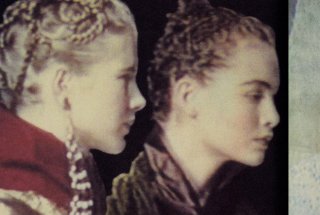 283669_407462789290903_2000604241_n.jpg90 KB · Views: 45
283669_407462789290903_2000604241_n.jpg90 KB · Views: 45 -
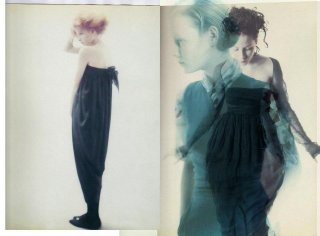 557188_407463529290829_1303465686_n.jpg63.1 KB · Views: 57
557188_407463529290829_1303465686_n.jpg63.1 KB · Views: 57 -
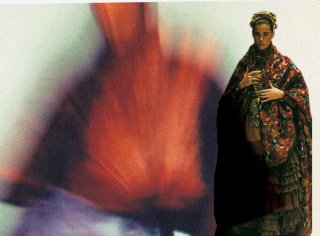 561162_407463505957498_13854349_n.jpg112.6 KB · Views: 54
561162_407463505957498_13854349_n.jpg112.6 KB · Views: 54 -
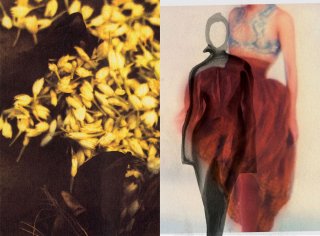 375714_407463469290835_1925367134_n.jpg120.7 KB · Views: 47
375714_407463469290835_1925367134_n.jpg120.7 KB · Views: 47 -
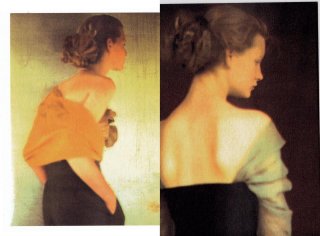 376774_407463445957504_1609858305_n.jpg90.3 KB · Views: 51
376774_407463445957504_1609858305_n.jpg90.3 KB · Views: 51 -
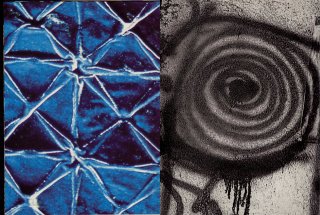 548385_407462835957565_542956863_n.jpg197.1 KB · Views: 42
548385_407462835957565_542956863_n.jpg197.1 KB · Views: 42 -
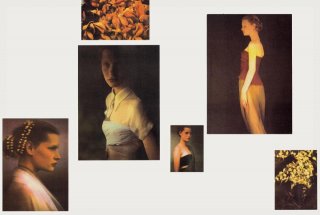 563555_407462849290897_1243431293_n.jpg54.6 KB · Views: 52
563555_407462849290897_1243431293_n.jpg54.6 KB · Views: 52 -
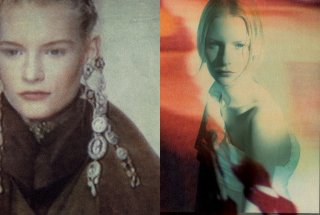 311533_407462882624227_1757669592_n.jpg99.1 KB · Views: 51
311533_407462882624227_1757669592_n.jpg99.1 KB · Views: 51
MissMagAddict
Well-Known Member
- Joined
- Feb 2, 2005
- Messages
- 26,621
- Reaction score
- 1,353
...
source | facebook joyce boutique
source | facebook joyce boutique
Attachments
-
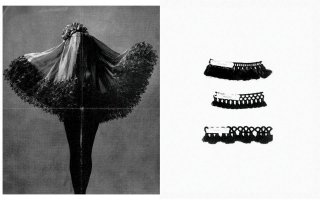 376889_407463035957545_1016089195_n.jpg76.5 KB · Views: 53
376889_407463035957545_1016089195_n.jpg76.5 KB · Views: 53 -
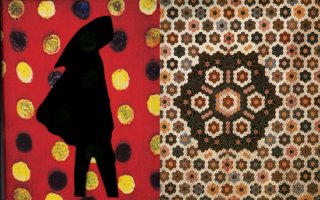 251995_407463015957547_16533747_n.jpg163.4 KB · Views: 47
251995_407463015957547_16533747_n.jpg163.4 KB · Views: 47 -
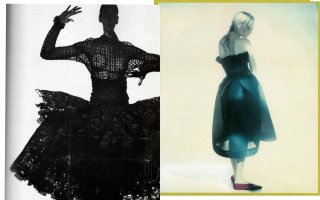 582583_407463005957548_90839120_n.jpg72.5 KB · Views: 50
582583_407463005957548_90839120_n.jpg72.5 KB · Views: 50 -
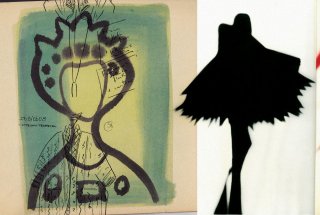 306717_407462915957557_1551214078_n.jpg89.6 KB · Views: 53
306717_407462915957557_1551214078_n.jpg89.6 KB · Views: 53 -
 250887_407462899290892_491495552_n.jpg72.9 KB · Views: 45
250887_407462899290892_491495552_n.jpg72.9 KB · Views: 45 -
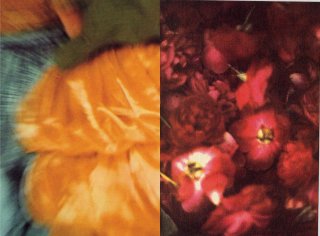 544428_407463399290842_235685326_n.jpg100.5 KB · Views: 46
544428_407463399290842_235685326_n.jpg100.5 KB · Views: 46 -
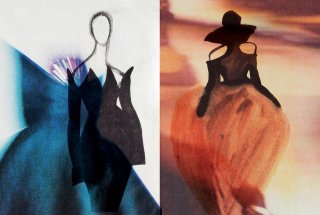 283617_407463322624183_318040089_n.jpg86.3 KB · Views: 45
283617_407463322624183_318040089_n.jpg86.3 KB · Views: 45 -
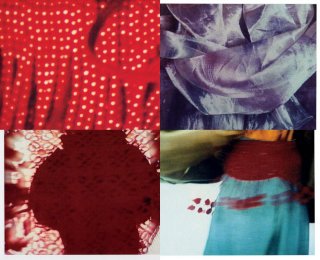 409580_407463189290863_892402945_n.jpg103.4 KB · Views: 44
409580_407463189290863_892402945_n.jpg103.4 KB · Views: 44 -
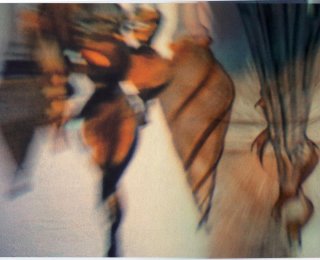 552737_407463152624200_226720963_n.jpg93.2 KB · Views: 43
552737_407463152624200_226720963_n.jpg93.2 KB · Views: 43 -
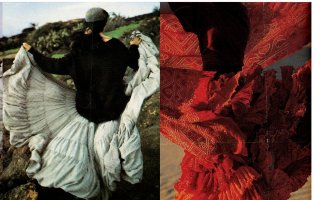 484031_407463042624211_1644217517_n.jpg145.6 KB · Views: 57
484031_407463042624211_1644217517_n.jpg145.6 KB · Views: 57
kasper!
Well-Known Member
- Joined
- Jun 23, 2007
- Messages
- 6,026
- Reaction score
- 2,051
MissMagAddict
Well-Known Member
- Joined
- Feb 2, 2005
- Messages
- 26,621
- Reaction score
- 1,353
Taxi August 1989
Model: Anastasia
Hair & Makeup: Cristina Zanatta
Photographer: Patrizio Nesi
source | scanned by lorilangille.blogspot
Model: Anastasia
Hair & Makeup: Cristina Zanatta
Photographer: Patrizio Nesi
source | scanned by lorilangille.blogspot
Attachments
-
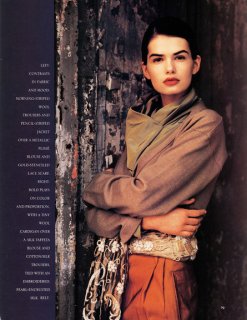 romeo gigli by patrizio nesi 2.jpg158.8 KB · Views: 46
romeo gigli by patrizio nesi 2.jpg158.8 KB · Views: 46 -
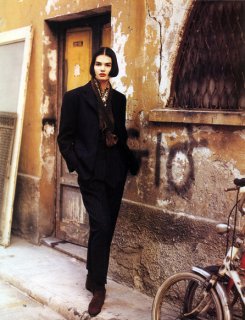 romeo gigli by patrizio nesi 6.jpg140 KB · Views: 47
romeo gigli by patrizio nesi 6.jpg140 KB · Views: 47 -
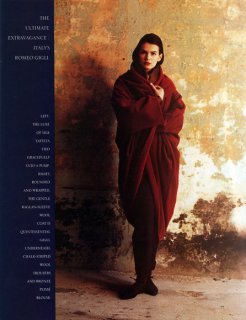 romeo gigli by patrizio nesi 5.jpg138.3 KB · Views: 48
romeo gigli by patrizio nesi 5.jpg138.3 KB · Views: 48 -
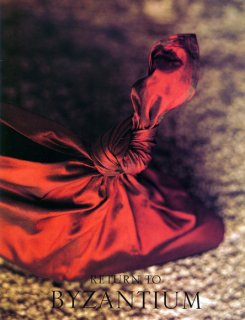 romeo gigli by patrizio nesi 1.jpg135.2 KB · Views: 48
romeo gigli by patrizio nesi 1.jpg135.2 KB · Views: 48 -
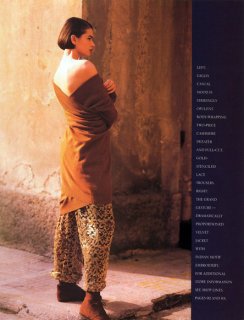 romeo gigli by patrizio nesi 3.jpg131.6 KB · Views: 42
romeo gigli by patrizio nesi 3.jpg131.6 KB · Views: 42 -
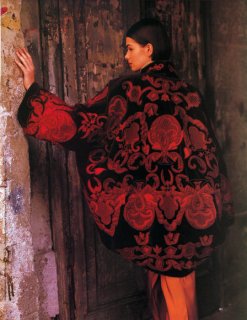 romeo gigli by patrizio nesi 4.jpg163.7 KB · Views: 45
romeo gigli by patrizio nesi 4.jpg163.7 KB · Views: 45 -
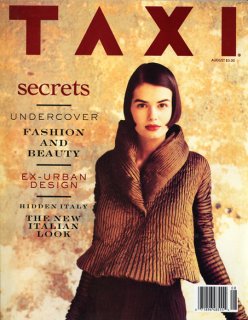 romeo gigli by patrizio nesi 7.jpg143.6 KB · Views: 43
romeo gigli by patrizio nesi 7.jpg143.6 KB · Views: 43
MissMagAddict
Well-Known Member
- Joined
- Feb 2, 2005
- Messages
- 26,621
- Reaction score
- 1,353
mint condish
Active Member
- Joined
- Dec 19, 2005
- Messages
- 2,554
- Reaction score
- 3
This makes me so nostalgic 
 I must thank you all so much.
I must thank you all so much.

 I must thank you all so much.
I must thank you all so much.Crying Diamonds
Geometric Discharge
- Joined
- Jan 13, 2008
- Messages
- 7,296
- Reaction score
- 4
Renaissance Men
According to Romeo Gigli and Joyce's Andrew Keith, China is in the middle of a creative renaissance. With a new collaboration, they're there on the front lines—and ready for the West to take notice.
By Jo-Ann Furniss
Published August 14, 2012

As the president of the multi-brand stores Joyce and Lane Crawford, Andrew Keith directs the expansion of Western fashion into mainland China like nobody else. Trained originally as a designer in London, he is one of those rare businesspeople in fashion who know about it from the inside instinctively. By setting a creative agenda—rather than just following a commercial orthodoxy—he has also realized the key to financial success in China. Hence Joyce's collaboration with the legendary designer Romeo Gigli—the iconoclast, curator of Chinese art, and all-round Renaissance man who doesn't really need an introduction—who has designed his new Fall collection for the retailer. Style.com sat down with Keith and Gigli at the Joyce department store in Hong Kong to discuss China's fashion future.
All the worlds collide in Hong Kong…
Andrew Keith: It really is like that; it is like a big village. Everything is so condensed and the amount that goes on in the city with a relatively small number of people…But it is very global, people are always coming and going.
How has it changed over the last 15 years, since the handover from the British in 1997? There did used to seem such a big divide between Hong Kong and over the border in mainland China—that does not seem quite as stark as it once was.
AK: I was here for the handover; I have been here for 18 years. I remember on the night of the handover, my mother faxed me through a message saying, "I am watching British TV. The tanks are coming from over the border. Make sure you get to the supermarket!" She also added, "And make sure the British Embassy have you registered in case you are evacuated." So there was a period of time where we were very concerned, but what has happened is that China has been very smart in how it has handled things. Not just because of Hong Kong's presence on a world stage and the freedoms it enjoys, but in actual fact, you see China referencing Hong Kong and seeing how it works. If anything, Hong Kong has become more international. The amount of people using Hong Kong as a base to go into China has increased hugely. It is now much less of a British colony and much more of a global city.
So it is a gateway to China now, rather than the exit point. Much more like it was in the nineteenth century, in a way. And I suppose China now is like being in Britain then, during the Industrial Revolution. And the opportunities for the fashion industry are, of course, huge.
Romeo Gigli: I first went to mainland China in 1984 and then returned pretty quickly in 1986. At that time, all people were wearing there were blue pajamas and white shirts. There were no cars, only bikes absolutely everywhere. I was just traveling—I wasn't invited there—I was traveling all around the world. But China was my mission, because I loved Chinese culture. It was really difficult to travel there at that time. At first I arrived in Canton; it was like a nightmare at the airport. The departures board was a blackboard that was chalked, rubbed out, and altered, usually with canceled flights! I spent hours there. But I did beautiful drawings on the trains. The trains were like something from another time, with white tablecloths and all sorts of people. Somebody might be sat next to you with chickens. It was a fantastic journey, and I quickly returned after two years because I wanted to catch more and more. People, normal people, would show you these amazing pieces of art they had hidden under the ground. They had had to hide things during the Cultural Revolution, but they were very proud of this heritage and wanted to show it to me.
AK: There was basically a cultural shutdown for about 50 years, and I think that is what is exciting about now. Now you have a new generation who are rediscovering and reinventing a Chinese aesthetic.
RG: This is something like a Chinese renaissance then.
AK: I think we are looking at that. China had been known as a manufacturer for quite some time, but design had usually originated from somewhere else in this industrial period. Now the design is emerging from China again. The younger generation have this interest in the revival, in the discovering of what Chinese style and design for the twenty-first century really mean.
RG: It is such a fantastic culture of art.
AK: It is so rich, it is all there. Particularly this amazing history of decorative and applied arts that is ready to be looked at again. It is looking at the way people discover their craft again.
Photo: Courtesy of Joyce Hong Kong
style.com
Crying Diamonds
Geometric Discharge
- Joined
- Jan 13, 2008
- Messages
- 7,296
- Reaction score
- 4
In this last video is Ju Li Li wearing a Gigli blouse? It's beautiful.
Similar Threads
- Replies
- 9
- Views
- 2K
- Replies
- 9
- Views
- 2K
- Replies
- 111
- Views
- 66K
Users who are viewing this thread
Total: 1 (members: 0, guests: 1)
New Posts
-
-
Harper’s Bazaar Turkey December 2025: Alessandra Ambrosio by Stewart Shinning (4 Viewers)
- Latest: Bertrando3
-
-
-











